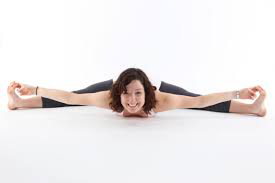 Dancers are renowned for their flexibility, and to many non-dancers, the main aspect that defines ‘a dancer’ is whether they can do the splits or not! Without entering into the nature of nurture debate, it is without question that dancers have an increased range of motion in comparison to the average person, and therefore dancers’ flexibility is something that can be greatly motives upon.
Dancers are renowned for their flexibility, and to many non-dancers, the main aspect that defines ‘a dancer’ is whether they can do the splits or not! Without entering into the nature of nurture debate, it is without question that dancers have an increased range of motion in comparison to the average person, and therefore dancers’ flexibility is something that can be greatly motives upon.
Dancers spend a lot of time in the studios and dance itself is based on the physical attributes and skill of their bodies. Much time must be spent keeping them in top condition for what is required. Dancers must ensure they take time at the beginning of the class or rehearsal to warm the body up sufficiently with cardiovascular activity, and they must also take time afterwards to cool down properly. This is done through lowering the heart rate properly and stretching out their muscles, as this is much safer when they are warm.
In terms for perfecting splits, this is vital. There are different stretch techniques, such as static, dynamic and proprioceptive neuromuscular, and when cooling down, dancers can use static (still) stretches to elongate the muscles when in the splits and improve the range of movement. The intensity of stretching is also important; the more intense the stretch does not always lead to greater flexibility as the muscle is being pushed to its extent. It has been thought that this may cause trauma to the muscle, and as a result it may be better to stretch with less intensity for greater results.
With the splits in particular, it seems little and often sees better results, working to elongate the hamstrings and the hip flexors after class when the body is warm enough to accommodate these stretches.
